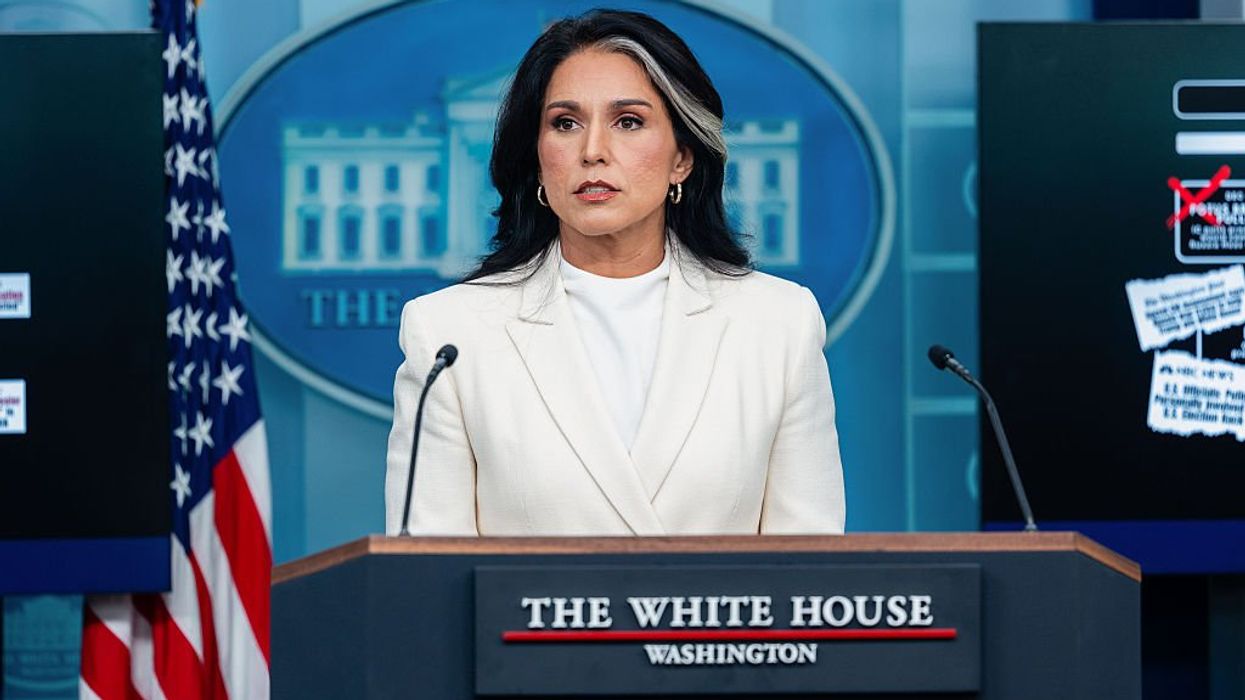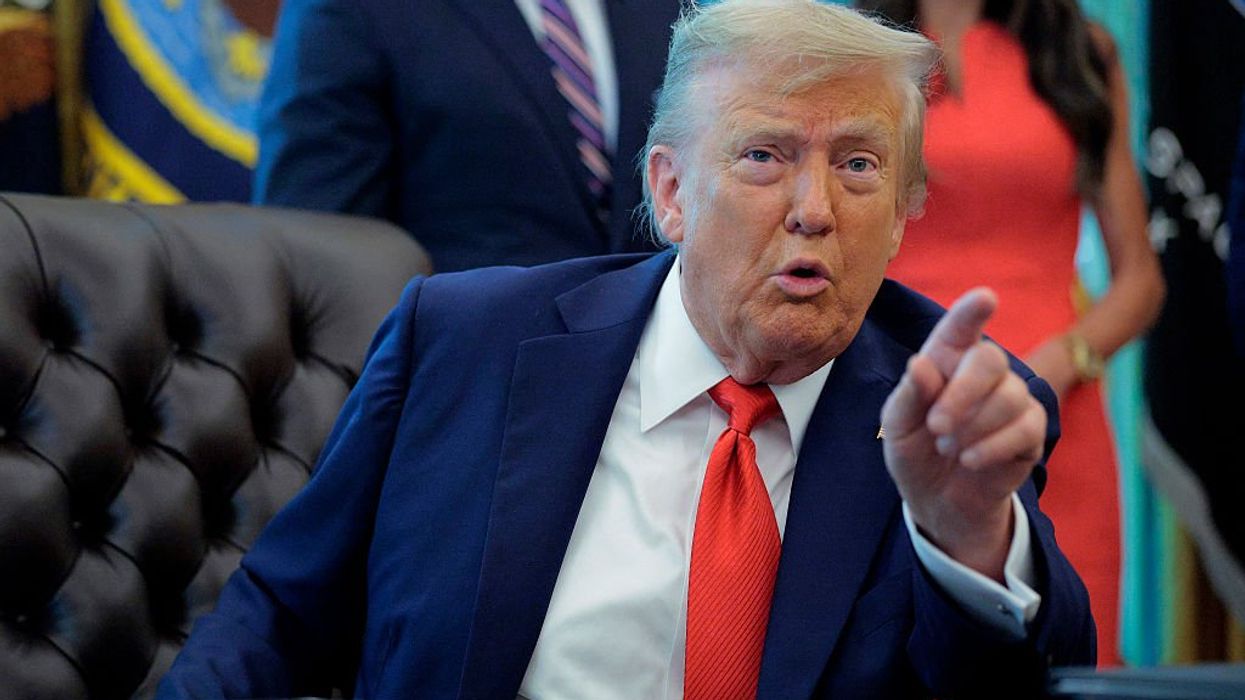Check out behind-the-scenes photos from the show HERE.
I’m telling you, we’re living in an America that I’ve never seen before. It’s an upside-down world. Remember, somebody said that a few years back, you won’t understand the world. One day, you’ll wake up, and the whole country has changed.
That’s it. It’s almost like we’re in a movie, and I just want to go home. Don’t you wish we had like little ruby slippers we could like there’s no place like home, there’s no place like home, there’s no place like home? I’m telling you, the flying monkeys are coming.
I was thinking about, because this is what I do, this is what I do for a living, I think about things like The Wizard of Oz. That’s the way I roll. And I was thinking about Dorothy. Wasn’t she just glam? And I was thinking, you know, Dorothy has this little problem of this little yappy dog. I hate these dogs, the kinds that are always like yap, yap, yap, yap, yap, yap, yap, yap, and they’re as big as your foot, and yet you can’t kick them. That would be wrong.
Well, the old lady down the street wants to take the little yappy dog because it bit her, and the woman deserved to be bitten. It’s the only time I look at the little yappy dog, and I’m like, “Good dog, good dog.” You’re plastic. What’s wrong? What’s up with that?
Anyway, so the lady wants to take, and so Dorothy, what does Dorothy do? She puts it in the little basket where I keep all my little yappy dogs, and she’s like I’ve got to run away to the circus. And so she runs into the circus trying to find somebody who will give her hope and change, but then the storm comes – oh, there’s a storm in this one too and it’s really bad? Let’s sing about it – somewhere over the rainbow.
Okay? In the end, we find out that the whole thing’s a total sham, okay? When she goes, because I think like she gets in a house, and then a house falls on her or the house falls on a witch or her sister. Here, the house falls on like two little feet. It’s like the ruby slippers, the ruby slippers, get the ruby slippers, and then she comes over and she’s like I’ve got to put the ruby slippers on.
Oh, I don’t know why I’m doing it, except it’ll be really agonizing to run down the stupid brick road with these ruby slippers. I mean, who wears heels in a place like this? Anyway, can’t we have some comfortable shoes.
So what happens? The witch comes – I’ll get you, my pretty. But just in time, this one comes, and you think wait a minute, she’s a witch? She can’t be a witch. She’s too beautiful. Yeah, this is what a witch is supposed to look like. And so what does she do? Remember, she takes Dorothy and her little dog – and your little dog too – and she goes into the castle, and she’s sitting there at one point with that big huge, you know the big huge globe, and she’s like puppies, puppies, puppies.
And she’s in the zzzzzzzz and even Toto’s zzzzzzzz – yeah, sleep, sleep. What’s she doing? She’s watching everything, right? She’s monitoring. She’s harassing. Ooh, she’s scary. Meanwhile, I just want to go home. I’m so sleepy. I forgot to tell you some of the people that she meets along the way, people that keep promising I’m going to help you, some of them are well-intentioned, but they’re all deeply flawed, even this one, the “good witch.” Really?
What is the good which doing to Dorothy? Oh Dorothy, all you have to do is wear the ruby slippers and then just go for a long, long, long, long walk. Somebody’s going to set you on fire. Dorothy just wants to go home. She can help her, but she wants her enemies defeated, and she knows she can do it. She can’t, but she can. Got it?
Go see the Wizard. Who’s the Wizard? He’s the answer? When you get there, you’re like this guy is a loser. He’s corrupt. He presents himself as a loving and kind man just wanting to help, but he’s a complete phony in the end who actually sends Dorothy out into danger. Why? Because he too wants to kill her.
All you have to do, come back! All you have to do is bring me the broomstick. What? Why don’t you do it? He doesn’t care about Dorothy. He’s being selfish and ruthless. The only difference between the two is eventually the Wizard admits it. In the end, the Wizard says I don’t really have any power. I’ve got a bunch of crap in a closet. That’s all I’ve got.
And he says I can’t take you home. Oh, that’s when she reveals in the end oh, you know what, you actually had the power the whole time. That’s when if I were Dorothy, I would have – but she doesn’t. She’s like really, what do I have to do? Oh, just bear down, focus for a minute, and will yourself there – there’s no place like home, there’s no place like home. And you and you and you were there. The end.
Now, why am I telling you the story of The Wizard of Oz? Well, let me take you through some of the characters again. Who’s Dorothy? Dorothy is us, the American people. Dorothy is the one who has a little problem, got a little yappy dog, but I love the yappy dog. I love her. But you’re not taking care of him. You’re not paying attention, something else as it’s biting people. Oh yeah, but I love it.
So what we do because somebody’s like hey, there are some things you have to do? What do you do? You run, you run away, and you run to somebody offering hope and change at a carnival. That’s not going to work out well. And then when we run home, it’s too late because the house is about to be sucked up with you in it, a little too late.
So once it gets too late, then you have somebody up here going ah, puppies, watching you the whole time. Who’s this? NSA, is that you? Government regulators, is that you? The IRS, ObamaCare, is that you? Ah, puppies, puppies, yes, it is.
Gee, if Dorothy would’ve paid attention a little earlier, maybe this one wouldn’t have had happened.
So what does she do? She gets advice from this one.
But why won’t this one actually take care of the problem? Why won’t this one just tell her hey, you know what, you could go home. I am a bad witch in the end because you could go home right now, but I’m going to send you on this really, really nasty, nasty adventure.
She could’ve done it, but she didn’t, because she wanted her enemies defeated. Gee, is there anybody that’s like that that could stop things but really doesn’t because he’s got some people he wants taken out? Bingo, Mitch McConnell. Now, who’s the Wizard? Well, we keep going to the Wizard right? Everybody says go to the Wizard because he has all of the answers. Boom, Karl Rove, is that you. Uh huh.
Now, along the way we meet a couple of other dopes, somebody who’s like I don’t know which way to go, I’m Lindsey Graham, I have no idea which way to go, the Scarecrow. Then, of course, you have the Tin Man, the old broken-down rusty machine, John McCain. And if you don’t think John McCain will take an axe to you if somebody oils him up, you can’t see John McCain going oh, oil my arms, oil my arms?
Yeah, he would, and then he’d cut you up into little pieces with his axe. And he’s an old rusted piece of crap from the last century left in the woods. Don’t oil him. Oil my arms – don’t do it.
And the Cowardly Lion, somebody who says I’m going to help you, yeah, I’m going to help you lots, and then soon as trouble starts up – John Boehner? – doesn’t do jack. I was afraid. I was afraid. Look, here’s the thing, puppies, this is real – puppies, puppies. May I suggest you get your little dog too and your little ruby slippers, okay?
I mean, I would like to wake up from this dream. I’d like to be able to say I had a crazy dream, and there was this guy who was the president and the NSA and the drones and then all that stuff. I’d like to be able to say and you were there and you and you and you. Sure, when we wake up, our world won’t be quite as colorful. It’ll be black and white and more of a sepia tone.
It won’t be as exciting, of course, but at least it will make sense. At least it’ll have everything in it that is meaningful. In the end, all of these things that you were looking for, all these people that you were saying oh gee, they’re going to have the answers, remember, they’re only circus people or hired hands. You have to dig deep and just say there’s no place like home, there’s no place like home, there’s no place like home.

 Kean Collection / Staff | Getty Images
Kean Collection / Staff | Getty Images
 Bloomberg / Contributor | Getty Images
Bloomberg / Contributor | Getty Images Chip Somodevilla / Staff | Getty Images
Chip Somodevilla / Staff | Getty Images ROBYN BECK / Contributor | Getty Images
ROBYN BECK / Contributor | Getty Images